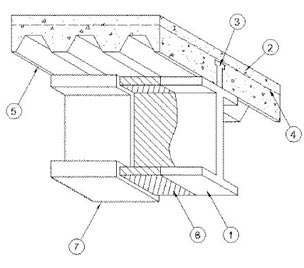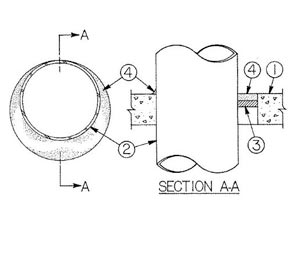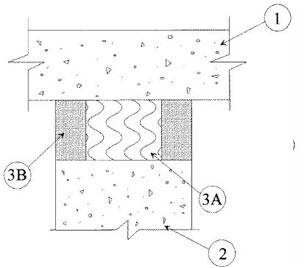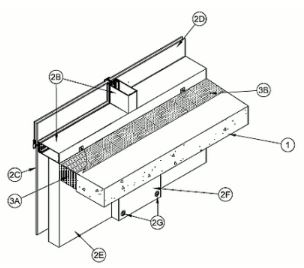
UL Product iQ® Database, is an online search engine platform that helps users find UL Listed and UL Certified products, components and materials. The search function supports keyword searches by file number, product type, category control number (CCN), fire-resistive design or assembly number, and model number. In addition, users can search for specific installation codes that apply to products.
Sign in to Product iQ or create a complimentary account to begin.
Quick links to fire resistance product categories
Canadian certification information
All designs found in Product iQ have been tested to ANSI/UL 263 (for the United States (U.S.)) and CAN/ULC-S101 (for Canada) and are therefore accepted in both countries. This is documented in the heading of every design.
Assemblies certified for use in Canada
Many U.S. designs have been certified for use in Canada. If the title of a design includes BXUV7 – Fire Resistance Ratings – CAN/ULC-S101 Certified for Canada, it has been investigated to Canadian standards and is intended for installation in accordance with Canadian building codes. Any loading or other restrictions noted on the design should be considered in the installation.
For additional information see the General Information for Fire Resistance Ratings – CAN/ULC-S101 Certified for Canada link on the top of the design. To search for Canadian cUL designs, enter the keyword BXUV7 and the desired design parameters.
Fire-resistance rated assemblies and rating certifications
Refer to Fire-resistance Rated Assemblies – ANSI/UL 263 in UL Product iQ for information about an assembly that meets your project specifications. The Numbering System for Fire-rated Assemblies table is a reference for the types of construction needed (e.g., floor-ceiling, beams, roof-ceilings, walls and partitions or columns) and the type of protection anticipated in the installation. Links in the table lead to related designs that can be opened and reviewed individually.
Product iQ search FAQ
- Q: How do I find fire-rated roofs, walls, floors, beams and columns?
A: Most assemblies can be found by searching with specific parameters, including:
- Keyword.
- Design number.
- Fire-rated design details assembly type.
- Construction group.
- Product name.
- Hourly rating.
- Protection type.
- Q: How do I reduce the number of assemblies found within a search?
A: The combination of parameters used in a search can lead to too many or too few search results. These suggestions can help broaden or narrow your search results:
- Leave the hourly rating blank. Sponsors of the tested designs typically want to achieve the highest rating possible, and the materials you would like to specify might have a higher hourly rating than you require.
- Be precise when entering the manufacturer’s name. If you are unsure, try using the keyword box.
- Keywords are only useful if the word or its derivative is contained within the design. Trade names or abbreviations such as “drywall,” “TJI,” “CMU,” “wide flange” and the like will not work.
- Examples of useful keywords include:
- “Siding,” “stucco” and “exterior” for walls with exterior finishes.
- “Damper” for designs tested with dampers.
- U300, U400, etc., for finding a fire-rated joint based on a wall series type.
- Q: Are wall assemblies tested for exposure to fire on both sides?
A: Yes. The ratings for walls and partitions apply when either face of the assembly is exposed to fire unless indicated otherwise in a specific design.
- Q: How do I find an assembly for exterior use?
A: The fire-resistive designs and UL-certified materials for walls and partitions are investigated to UL 263, which addresses fire-resistive requirements only. The scope of UL 263 does not address whether a wall or partition is used on the interior or exterior of a building.
UL 263 addresses the testing of wall assemblies that are asymmetrical by describing the differing components on each side of the studs to accommodate the interior and exterior of the building. These walls and partitions are typically evaluated in a manner where the interior face of the assembly is exposed to the fire, unless otherwise specified in the individual designs. For asymmetrical walls that have been evaluated where the exterior face of the assembly is exposed to fire, UL designs will state “Rating Exposed to Fire on Exterior Face”, “Rating Exposed to Fire on Either Face” or equivalent wording. In these cases, the design also identifies the construction items, such as facing, veneers or cladding required to achieve that fire resistance rating.
The ratings for symmetrical walls apply when either face of the assembly is exposed to the fire. Exterior cladding and other local code required materials may be added to symmetrical wall designs with gypsum panels attached to either wood studs or steel studs for use in exterior wall applications, provided the additional materials do not jeopardize the existing rating, as determined by the Authority Having Jurisdiction.
Where symmetrical or asymmetrical walls are used on the exterior of a building, additional requirements applicable to exterior walls, such as those regulating insulation, exterior cladding and weather protection should apply. The Authority Having Jurisdiction should be consulted to ensure compliance with these other code requirements applicable to exterior walls.
Design criteria and allowable variances
To remain within the design criteria, the assembly must be constructed as specified in the published design. The three potential types of acceptable modifications include:
- Optional or may be provided – If a construction element is identified as "optional" or "may be provided," it is not mandatory and doesn't need to be included in the construction.
- Minimum or maximum – If a dimension is indicated as a “minimum” or “maximum,” the construction can include greater or lesser dimensions, respectfully.
- See General Information for Fire-resistance Ratings – UL 263 – If the top of each design links to "See General Information for Fire-resistance Ratings – UL 263," consult the information for construction details, including clarifications and permitted variations.
Product category guide information can clarify construction and application requirements for the certifications and acceptable variances allowed for the designs and systems, including:



